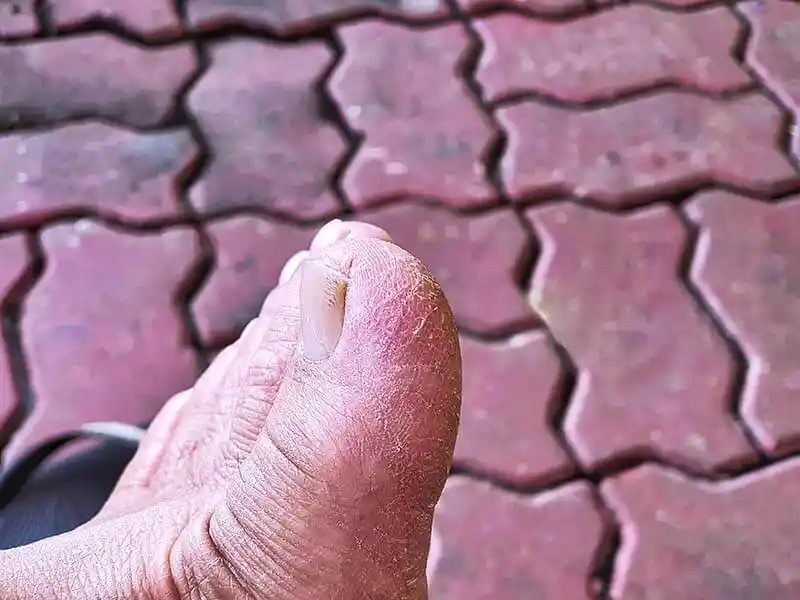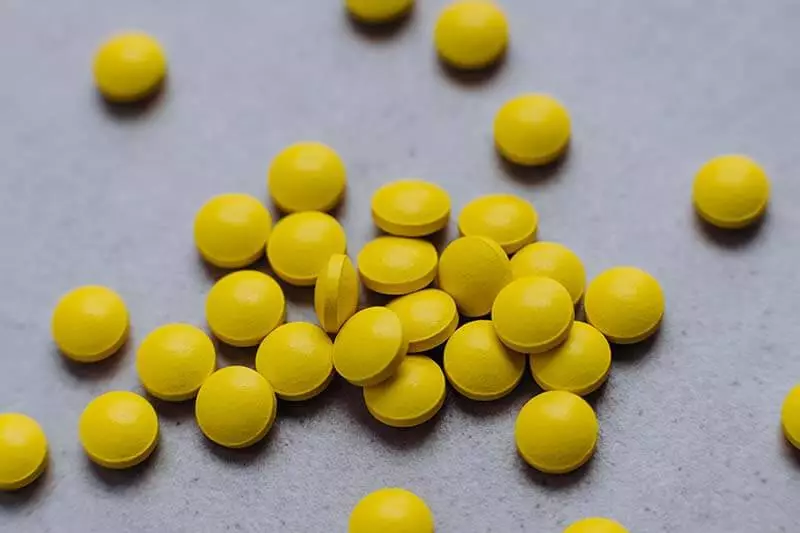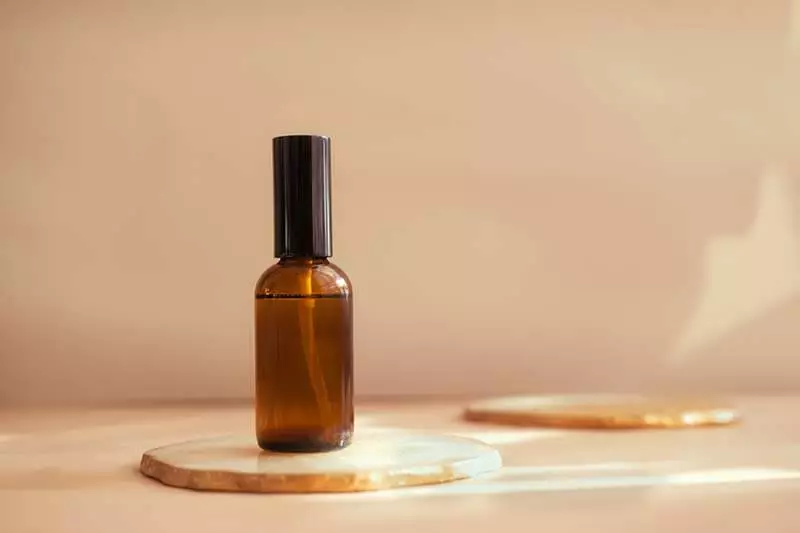Nail fungus is one of the most common skin conditions affecting millions of Americans each year. The good news is that tea tree oil has proven effective at treating this condition.
Tea tree oil comes mainly from the leaves of the tea tree (Melaleuca alternifoli). This natural remedy was originally discovered by Australian Aborigines who would rub their skin with the leaves to treat wounds and burns. Tea tree oil contains powerful antimicrobial properties that kill bacteria and fungi.
To prevent or cure nail fungus, apply a thin layer of tea tree oil directly onto affected area once or twice daily. If you notice signs of infection, consult your doctor immediately.

Diagnosis
Nail fungus is common, especially among people whose hands spend long hours in water. Nails become thickened and discolored because of an overgrowth of fungi called dermatophytes. Fungal infections occur most often around the cuticle area of the finger and toe nails.
The primary symptom of a fungal infection is pain, usually accompanied by redness, scaling, cracking, peeling or bleeding. If you notice white spots, yellowing or crumbling of the skin around the fingernails or toenails, it could indicate a systemic problem, such as diabetes or thyroid disease. A physician may perform tests to rule out these diseases.
If you think your nails might be infected, go to the doctor right away. A simple examination might reveal the source of your discomfort. You may be prescribed antifungals to treat the infection. If the problem persists after trying non-invasive treatments, then surgical removal of the affected tissue may be required.
What Is Tea Tree Oil And How Does It Work?
As previously mentioned, tea tree oil comes from the dried leaves of the Australian tree, Melaleuca alternifoliia. This small tree grows best in areas with high rainfall and humidity. Its leaves contain a chemical compound called terpinen-4-ol, which gives the oil its distinctive smell.
The oil has long been used as a natural remedy for many health conditions. In fact, it’s one of the most popular essential oils worldwide.
It’s potent, an effective natural treatment and has antifungal properties. Its main use today is as a topical treatment for infections such as cuts, scrapes, burns, rashes and acne. However, tea tree oil is much more effective when diluted in carrier oils like olive oil, almond oil, jojoba oil, coconut oil, or even Vaseline.
When applied topically, tea tree oil penetrates the skin quickly and works well against bacteria, viruses, fungi and yeast. It also helps promote healthy cell growth and repair damaged tissues.
Inhaling tea tree oil relieves congestion and clears sinuses. It is often combined with eucalyptus oil and menthol to produce an inhaler for respiratory problems.
Does Tea Tree Oil Work for Nail Fungus?
If you’re struggling with nail fungus, tea tree oil might be worth a try. Tea tree oil has been used for centuries to cure a variety of ailments including skin infections, wounds, burns, acne, and even dandruff. But did you know it could help treat nail fungus too?
Nail fungus occurs when bacteria and fungi build up under the nails. This causes discoloration, thickening, scaling and pain.
There are several treatments for nail fungus, including over-the-counter medications like salicylic acid, cortisone creams and topical antifungal ointments. But some people prefer natural remedies because they don’t cause many side effects.
One such remedy is tea tree oil. In fact, it’s one of the most popular natural remedies for treating infected nails; in particular nail fungus. Tea tree oil contains antibacterial properties that kill the bacteria causing the infection. Plus, it’s safe enough to use on children.
Natural Tea Tree Oil vs. Common Drugs
Both treatments work well, although natural tea tree oil is a traditional treatment that takes longer to work. Some researchers have found that using tea tree oil as a type of treatment has slightly fewer side effects compared to the use of common drugs, like antifungal medications.
A clinical trial that compared the two treatments reported the most important finding after six months. Over half of the patients treated with the natural treatment using tea tree oil had no evidence of infection, while almost none of those taking the antifungal prescription medication remained clear.
This suggests that the tea tree oil could be used alone, or possibly combined with antifungal drugs, to treat nail infections.
Treating the Underlying Cause
The relationship between blood flow and athlete’s foot/nail fungus is complex. In some cases, the fungi themselves cause vascular insufficiency. In others, the fungi are merely a symptom of a deeper systemic disorder, such as diabetes or atherosclerosis. There is no clear evidence that improving blood circulation will cure the infection. However, there is good evidence that improving blood circulation can alleviate symptoms and reduce the risk of recurrence.
In fact, the best way to treat nail fungus is to address the underlying cause. This includes addressing factors that contribute to local vasoconstriction, including smoking, excessive alcohol consumption, poor nutrition, high stress levels, prolonged exposure to cold weather and certain medications. Poor circulation can also occur due to conditions that affect the entire circulatory system, such as heart failure, chronic kidney disease and peripheral arterial disease.
Medications
Your doctor or pharmacist may recommend oral antifungals such as itraconazole or fluconazole (Diflucan) to treat fungal infections of the nails. The medications work best when applied directly to the affected area, usually under the fingernails or toenails, although some people use topical treatments.
The most common types of fungal nail infections include athlete’s foot and ringworm. Both conditions cause itching and burning sensations, especially around the toes. They can spread to nearby areas, including the groin, armpits, scalp and pubic hair. In rare cases, the infection spreads to the bloodstream and causes systemic symptoms like fever, fatigue, headache, nausea, vomiting, diarrhea or abdominal pain.
You should always check with your healthcare professional before taking any medication, including over-the-counter products.

Surgery
One of the best medical treatments for fungal infections is oral medications such as itraconazole or fluconazole. These drugs work by inhibiting the growth of fungus cells.
If you are unable to take medication orally, topical treatments can be prescribed. The most common topical agent is miconazole nitrate cream. This product works well for treating superficial fungal infections, like athlete’s foot or jock itch. However, it does not penetrate deeply enough to treat deep infections like ringworm. For those cases, surgical removal of the infected fingernail is required.
FAQs
How long does tea tree oil take to cure toenail fungus?
Tea tree oil is effective in treating toenail fungus, but it takes several weeks for the effects of the treatment to be seen. The length of time depends on how severe the infection is and whether or not the nail has been cut off.
How do you use pure tea tree oil?
As we’ve covered, tea tree oil has antibacterial properties and is an effective disinfectant. It kills bacteria, fungi, viruses, parasites and other microorganisms on contact. Pure tea tree oil can be used topically or orally to treat nail fungus. It can also treat skin infections, cuts, scrapes, burns, rashes, insect bites, diaper rash, athlete’s foot, ringworm, psoriasis, sunburns, and the like.
What is the fastest home remedy for toenail fungus?
One of the best ways to get rid of toenail fungus is by using a topical treatment. The most effective treatment involves applying an over-the-counter product containing tea tree oil, which has been proven to be more effective than other treatments.
How do I know if my toenail fungus is healing?
Here are some signs that your toenail fungus is healing:
1. A reduction in the amount of white spots on the nail.
2. Lessening of the redness of the nail.
3. An improvement in the appearance of the nail.
4. A decrease in body odor generally and the odor associated with the condition.
5. No longer having painful symptoms.
6. Improvement in the health of the surrounding tissue.
8. A reduction in the size of the existing infection.
Is it safe to use during pregnancy?
Tea tree oil is not recommended during pregnancy because it can cause miscarriage or premature labor. It also has an anti-biotic effect.





